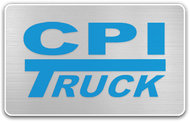History Of The Chevrolet Truck 1947-1987
In 1946, Chevy produced a full line of trucks ranging from light duty to heavy duty. After just two years (1946–1947), Chevy launched a completely redesigned line of pickups known as the "Advance Design" trucks.

Advance Design: 1947–1957
As Chevrolet's first entirely new and redesigned truck line postwar, the Advance Design pickups are one of the most notable models in the evolution of old Chevy pickup trucks. Debuting in early 1947, these trucks sported a completely new look with a five-bar horizontal grille that is instantly recognizable. Not only was this a fresh-looking truck, but the inside of the cab was both longer and wider, with room for a third person to sit comfortably between the driver and passenger. Some additional creature comforts include an in-dash radio, a fresh-air heater and defroster system, and corner windows. Under the hood was a 216.5-cubic-inch Thrift Master overhead valve six-cylinder engine capable of producing 90 horsepower and 174 lb.-ft. of torque.
There were three different truck sizes for the Advance Design series, including a half-ton, a three-fourths-ton, and a one-ton model. The Chevrolet 3100 Series was the half-ton model, while the 3600 and 3800 were the three-fourths-ton and one-ton models, respectively. Regardless of the model, the pickup boxes were 50 inches wide with wooden floors for each truck. The next major change for the Advance Design trucks didn’t come until 1954 when the trucks featured a brand-new grille, steering wheel, instrument panel, parking lights, and a one-piece windshield. The engine increased from 216.5 cubic inches to 235.5 cubic inches with 112 horsepower and 200 lb.-ft. of torque.

Task-Force Generation: 1955–1959
After the Advance Design trucks came to an end, the Task Force trucks emerged in 1955. Featuring the truck industry’s very first wraparound windshield, the Task-Force pickups also included an egg-crate grille, running boards that were hidden behind the door, and a new style of headlights. Not only was the exterior updated, but the interior received some updating as well, complete with additional creature comforts that added a touch of luxury to the pickups. Also in 1955, Chevy started producing an overhead-valve V8 engine. While Ford had released the first overhead valve V8 engine in 1954, Chevy was a year behind. Later dubbed the Small Block engine, Chevy's 265-cubic inch engine put out a powerful 238 lb.-ft. of torque at 2,000 rpm. While Chevrolet may have arrived late to the V8 game, the wait was well worth it, with Chevy eventually outselling all other manufacturers during this time.
With the 1955 Chevrolet 3124 Series Cameo Carrier, Chevy released their first Fleetside truck model. The Fleetside design was clean and simple, with flat, straight lines from the truck bed sitting flush with the cab and fender. The 1955 Cameo Carrier had a 235-cubic inch inline six-cylinder engine with 123 horsepower and 207 lb.-ft. of torque. Two-tone paint in Bombay Ivory and Commercial Red was the only available option. The Cameo Carrier inspired the new El Camino pickup that debuted in 1959. Even though the El Camino stopped production in 1960, it made a reappearance later in the decade.

Chevy C10 & C/K Series Debuts
In 1960, the Chevy C/K line of trucks was released for the first time. One of the most popular models from the C/K series was the Chevy C10, a half-ton, light-duty pickup. Several body styles
were available for the C/K trucks, such as the popular Fleetside and the Stepside, which consisted of rear wheels on the outside of the bed, with a step located between the cab and the wheel wells. For the second generation beginning in 1967, the C/K series was dubbed the Action Line trucks, known more casually as the Glamour Pickups. Charming consumers with its good looks, the Chevy C/K trucks also had eight engine options for the second generation. This generation ended with the 1972 Chevy C10, now one of the most popular choices for enthusiasts.

In 1973, the third-generation C/K series was released, also known as the "Rounded-Line" generation. Also referred to as the "box-body" or "square-body" trucks, the third release of the C/K series saw another redesign of the body. Considered by many to be the first modern heavy-duty pickup, the 1973 Chevy C30 One-Ton Dually was the first dual rear wheel truck in the industry to have an available Crew Cab, with seating for up to six people. Under the hood was a 350-cubic inch V8 engine that had 155 horsepower and 255 lb.-ft. of torque. Chevrolet began to offer the Silverado luxury trim edition in 1975. While the fourth generation began in 1988, Chevy moved to a different naming structure for the C/K trucks. As such, the end of the Chevy C10 era ended in 1987. The C10 is an important aspect of Chevy truck history since it leads to the eventual replacement of the C/K line with the Silverado, which will become one of the best-selling trucks in America.

